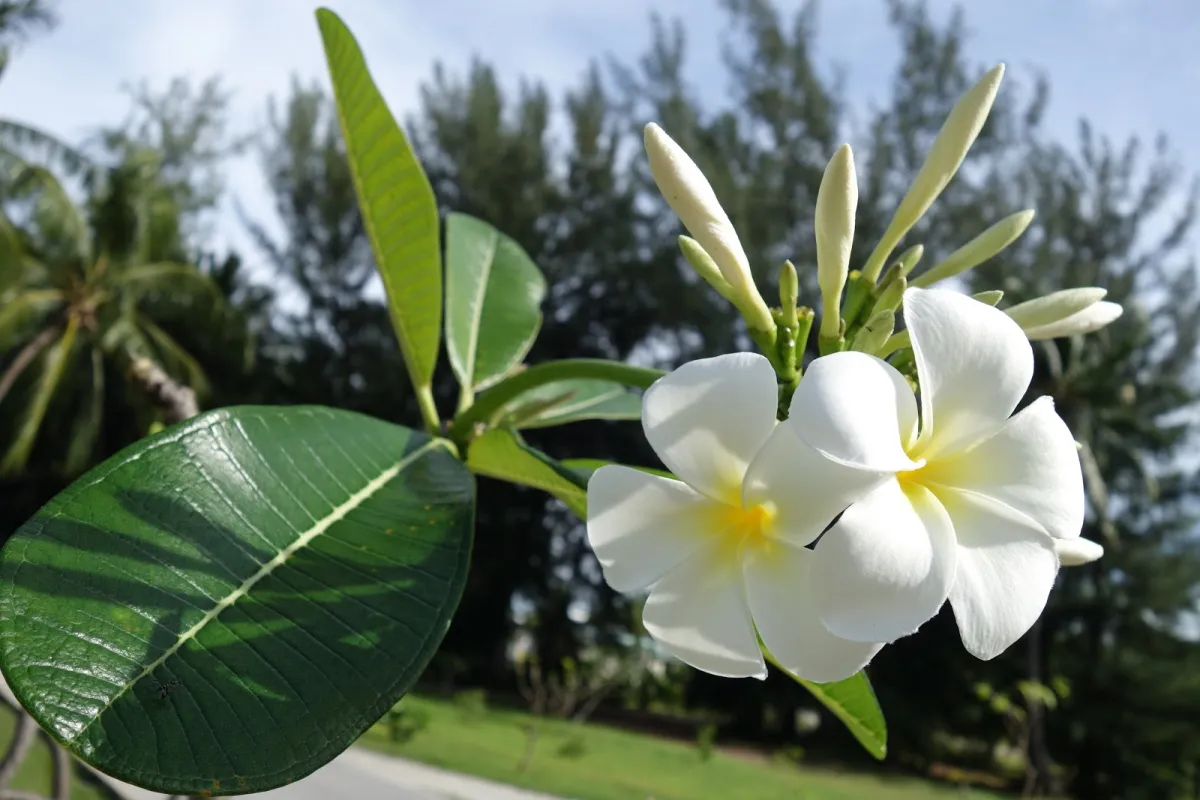
Frangipanier
Tipanie (FP)
The Tipanie was first introduced in 1852 in tahiti by Abadie. Its name “Frangipani” dates from the XIIth century, a noble Italian named Frangipani who made perfumed gloves. In the XVIth century, Europeans traveling in the Caribbean discovered a tree whose flowers emanated a delicious odor that resembled the perfume created by the noble Italian, hence the name frangipani. From a botanical point of view, the Tipanie is a small, perennial tree with oval leaves that range from 20-30 cm. It also has flower with 5 petals of different colors. The genus Plumeria is the most widespread in the Fenua. Plumeria rubra is part of this genus and is originally from Central America, Venezuela, and Mexico. There exists several varieties and cultivars. The colors of the flowers that we find in Tetiaroa are white, yellow-white, pink, and red. The flowers are used in perfumes and in the confection of crowns worn around the neck or head. The sap is used to treat warts. In modern medicine, the leaves and the bark are used to make antibiotics. At a cultural level, the Tipanie is a sacred tree that symbolises immortality. This analogy is due to the branches that can be preserved for a long time. In Tahiti, we often find this tree planted in cemeteries.
| Famille | Apocynaceae |
|---|---|
| Biogéographical status | Cultivated on Onetahi only |
| Type biologique | tree |
| Abondance sur Tetiaroa | Only on Onetahi |
| Écosystème sur Tetiaroa | mixed forest |
S: Societé | T: Tuamotu | M: Marquesas | G: Gambier | A: Australs | FP: Polynésie française

